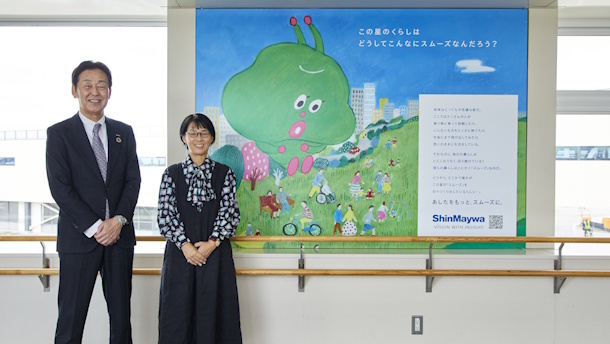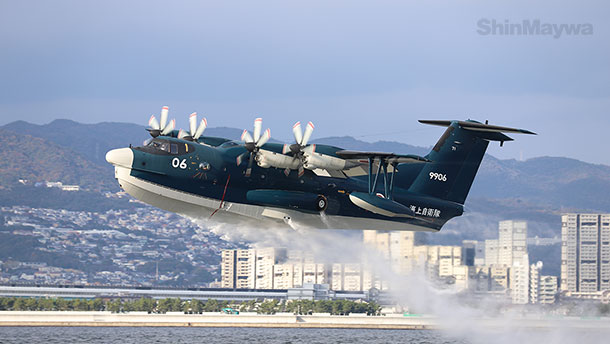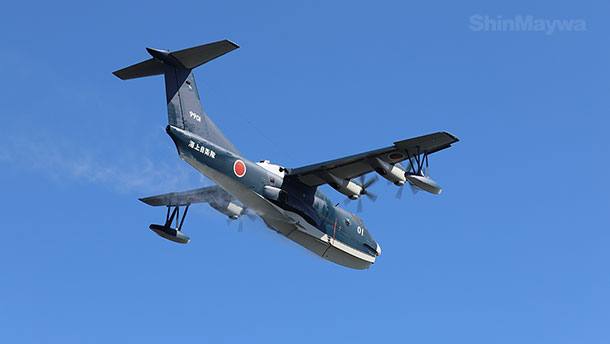[Series] How the US-2 is made - Special Issue (1)
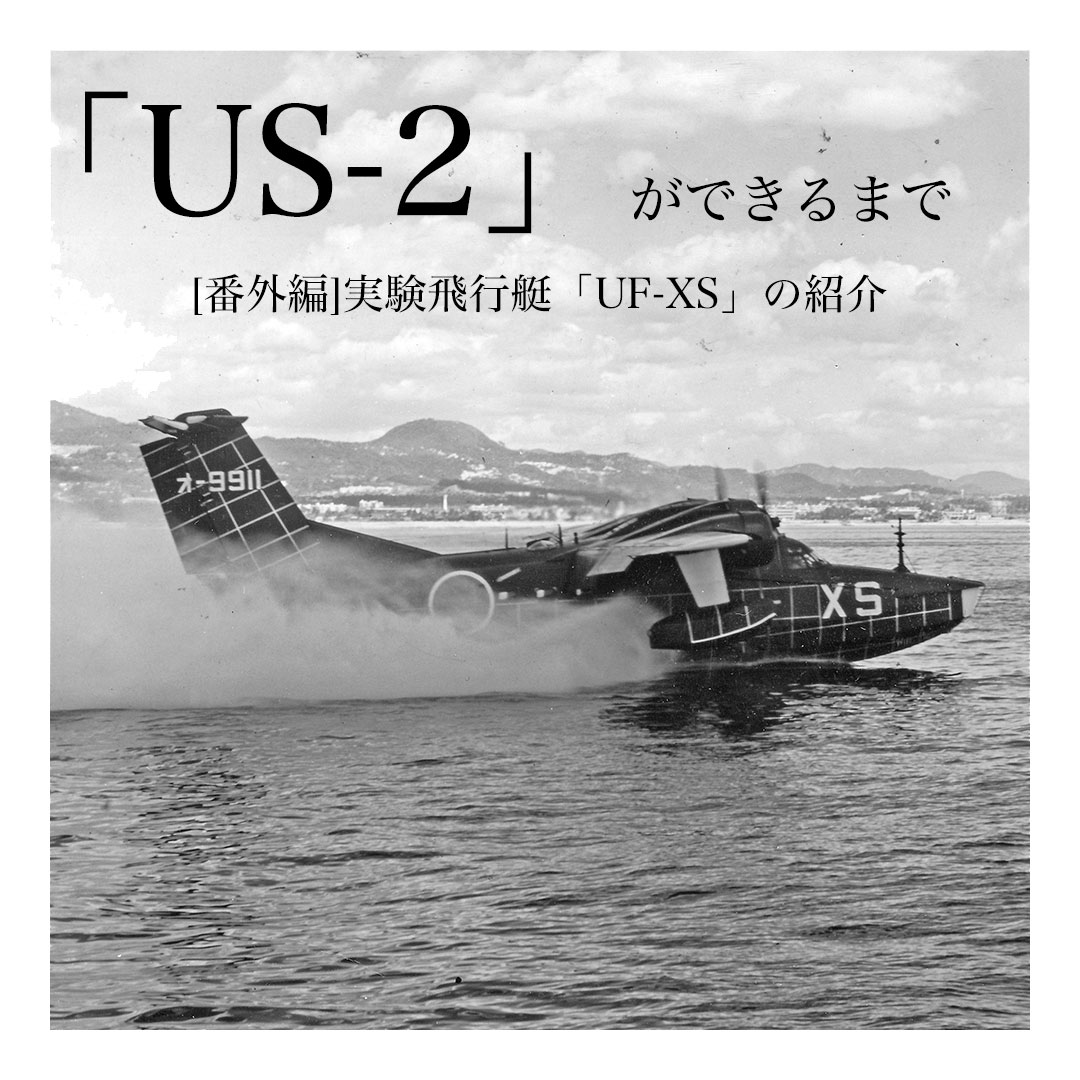
Close coverage by a professional writer
Experimental flying boat UF-XS
—Would you like to see how all US-2 begin
The US-2 is the world's only amphibian aircraft that can take off and land on ocean surfaces with high waves. In this issue, we will introduce the UF-XS, an experimental flying boat that became the cornerstone of this high performance.
Kawanishi Aircraft Company, the predecessor of ShinMaywa Industries, manufactured numerous
flying boats
before and during World War Two with Mr. Shizuo Kikuhara, who was in charge of design at the time. After the war, the U.S. Navy examined Kawanishi H8K ”Emily”, which was a compilation of technologies, and was amazed at its high performance. While, under the leadership of Mr. Kikuhara, ShinMaywa Industries established a series of elemental technologies to realize flying boats that can cross a raging sea for the new era. The leaders of the U.S. Navy noticed these achievements and invited Mr. Kikuhara to a meeting. This event led to the provision of the UF-1 Albatross to Japan. The UF-XS is the experimental flying boat that was largely remodeled at the Konan Plant.
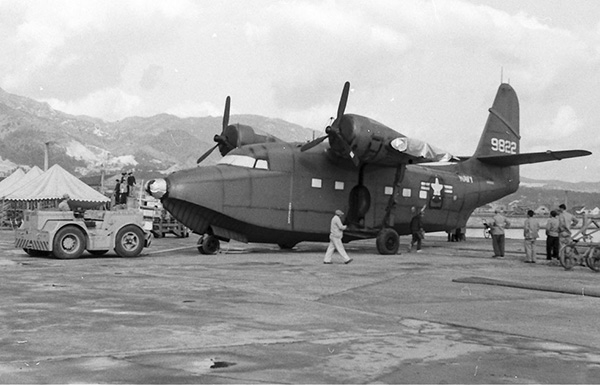
To take off and land in raging sea, the engine and propeller must not be damaged even when water is splashing high. Therefore, the BLC system that reduces the velocity when taking off and landing on the water, and the groove-type spray suppressor that keep splashes low were installed. The modified aircraft was longer, wider, and higher than the UF-1 Albatross. The number of engines was increased from two to four and completely new vertical and horizontal tail fins were installed. The "magical modifications" are such that it is hard to tell what is a prototype at first glance.
The completed UF-XS made its first successful flight in December 1962 and demonstrated its expected performance in the subsequent test flight. The dawn of a new era for amphibian aircraft. The BLC mechanism, spray suppressor, and other technologies established for the UF-XS has been passed down to the US-2.
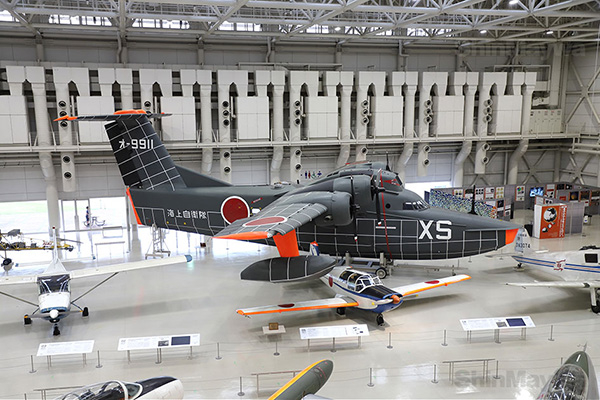
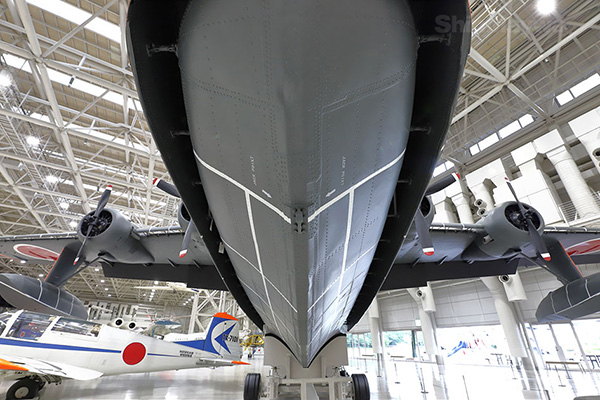 (3) To find the best shape for the spray suppressor, the width of the groove on the starboard (left side of the picture) is about 1 cm narrower than that on the port.
(3) To find the best shape for the spray suppressor, the width of the groove on the starboard (left side of the picture) is about 1 cm narrower than that on the port.
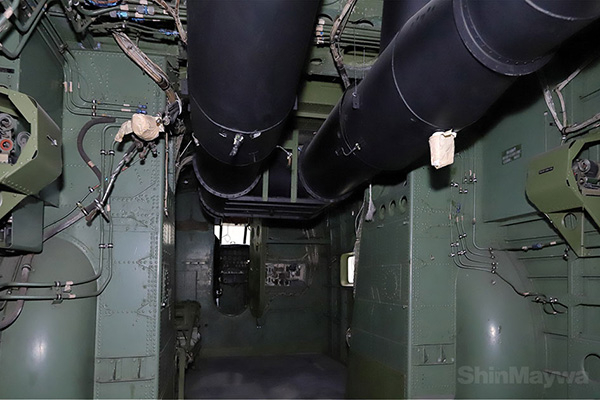 (4) The BLC system is a system that blows out high-pressured air—generated by a dedicated engine—from moving wing parts including the upper part of the flaps. Air ducts were installed in the cabin.
(4) The BLC system is a system that blows out high-pressured air—generated by a dedicated engine—from moving wing parts including the upper part of the flaps. Air ducts were installed in the cabin.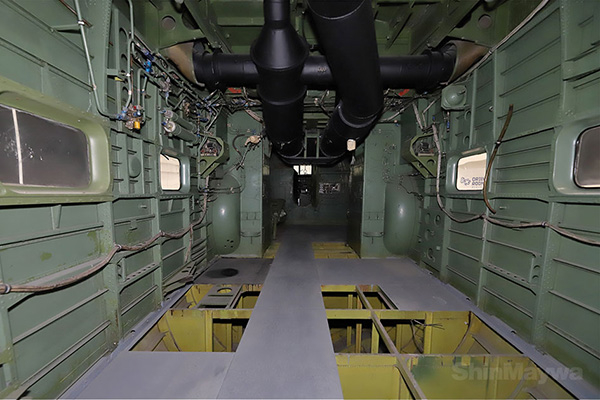 (5) The light green part above the floor is the original cabin of the UF-1 Albatross. The yellow part below the floor is the bottom of the airframe made by ShinMaywa Industries.
(5) The light green part above the floor is the original cabin of the UF-1 Albatross. The yellow part below the floor is the bottom of the airframe made by ShinMaywa Industries.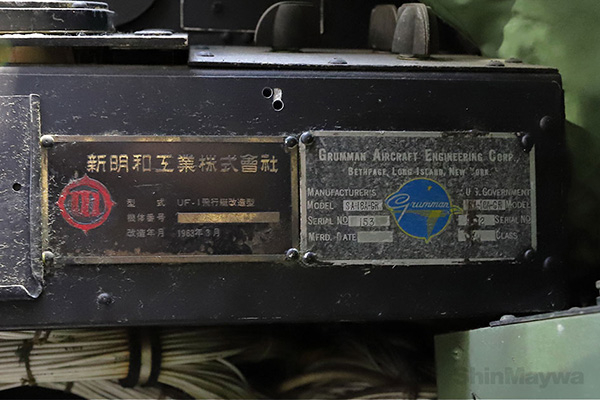 (6) The nameplate shows the name of the aircraft. The UF-XS has two nameplates during development at that time, one under Grumman Aircraft Engineering Corp. (right) and the other under ShinMaywa Industries (left).
(6) The nameplate shows the name of the aircraft. The UF-XS has two nameplates during development at that time, one under Grumman Aircraft Engineering Corp. (right) and the other under ShinMaywa Industries (left).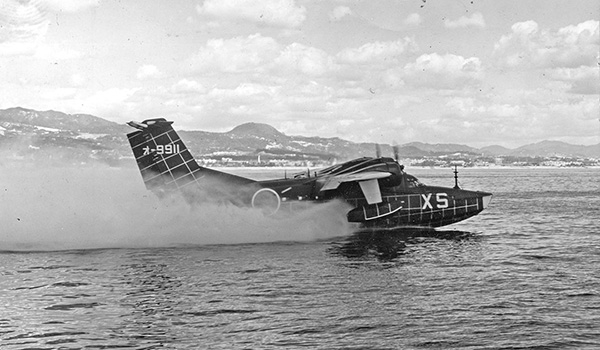 (7) The BLC system and spray suppressor prevent water from splashing onto the wings and engines. Provided by: Sekireisha “Aviation Information” published by SEKIREISHA, Ltd.
(7) The BLC system and spray suppressor prevent water from splashing onto the wings and engines. Provided by: Sekireisha “Aviation Information” published by SEKIREISHA, Ltd.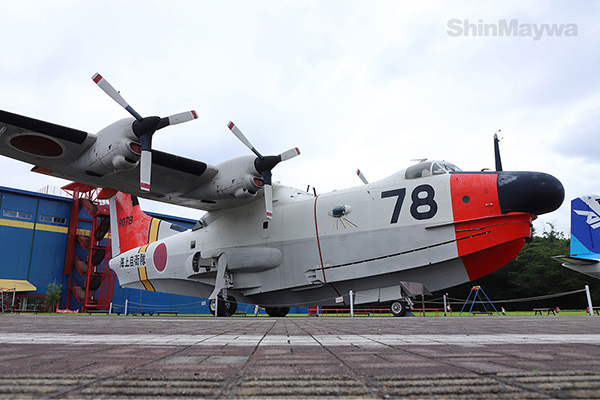 (8) The US-1A is also displayed outside at Gifu-Kakamigahara Air and Space Museum. You can compare it with the UF-XS.
(8) The US-1A is also displayed outside at Gifu-Kakamigahara Air and Space Museum. You can compare it with the UF-XS.* The aircraft is undergoing re-coating at the time of this writing. Its beautiful appearance is planned to be exhibited in January 2023.
The UF-XS was restored to its original condition and is currently on displayed at Gifu-Kakamigahara Air and Space Museum.
Writer Hidenori Itakura
- *This series is produced and published with the permission of the Ministry of Defense. Please do not reproduce the content and images of this series.

